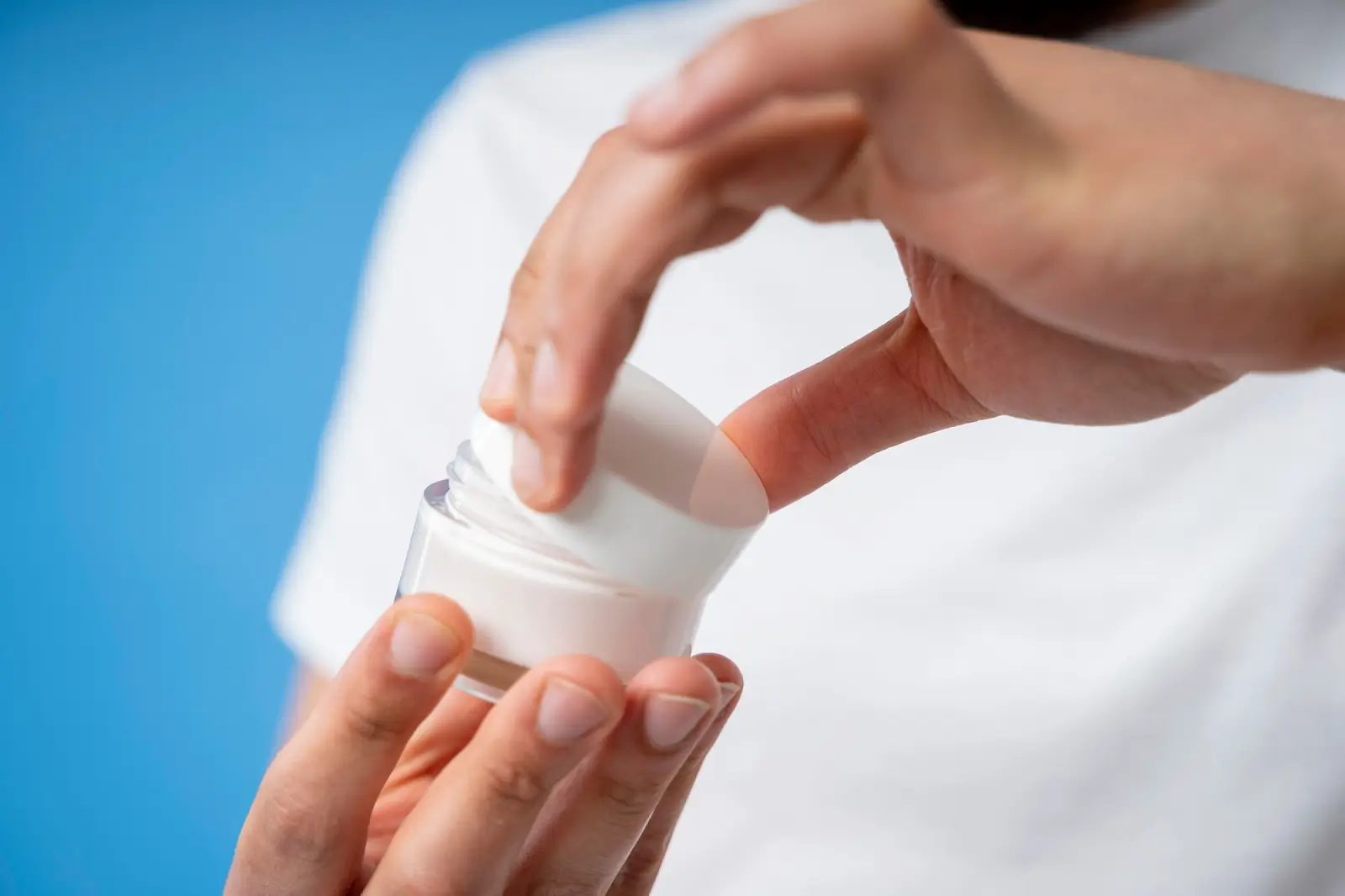
Topical anesthetics are widely used in clinical practice to reduce pain during minor medical and cosmetic procedures. These agents work by blocking nerve signals, providing temporary numbness in the targeted area. Among the most trusted and effective combinations are lidocaine and prilocaine, which are commonly used in outpatient and dermatological settings for localized pain management.
One of the most recognized formulations containing these two anesthetics is EMLA cream. It’s frequently applied to the skin before procedures such as needle insertions, laser treatments, or minor surgeries. By numbing the surface area, EMLA ensures a more comfortable experience for patients while maintaining safety and ease of application.
This article will explore the generic name of EMLA cream, its active ingredients, and its uses in medical and cosmetic applications.
Key Takeaways
- EMLA cream consists of a eutectic mixture of lidocaine (2.5%) and prilocaine (2.5%), which acts as a local anesthetic by blocking nerve signal transmission through sodium channel inhibition.
- The cream typically begins to numb the skin in 30–60 minutes, with peak numbness occurring 1–2 hours after application.
- Caution is advised when EMLA cream is used with other local anesthetics or medications, as it can increase the risk of toxicity and other side effects.
- Users should always follow recommended dosages, apply only to intact skin, and wash off the cream before engaging in activities that could transfer numbness (e.g., sexual activity).
- While both branded and generic versions contain the same active ingredients, branded products may have better consistency and enhanced penetration capabilities. Generic versions are usually more cost-effective.
- It’s essential to consult a healthcare professional before use, especially for individuals with underlying health conditions or concerns.
About: Doctor Medica is your trusted supplier of top-quality dermal fillers, viscosupplements, and more for your medical practice. We offer genuine products from leading brands at the lowest prices. Contact the Doctor Medica today to order EMLA Cream online for your practice.
Mechanism of Action: Lidocaine and Prilocaine

Lidocaine and prilocaine are both amide-type local anesthetics, which work by blocking sodium channels in nerve membranes. This action prevents the transmission of pain signals from the skin to the brain, resulting in localized numbness. Lidocaine offers a faster onset of action, while prilocaine has a longer-lasting anesthetic effect, making their combination ideal for extended pain relief.
When used together, these two agents create a synergistic effect—enhancing the depth and duration of anesthesia without significantly increasing the risk of side effects. This makes EMLA cream particularly valuable in clinical, cosmetic, and pediatric settings, where temporary pain control is essential.
Pharmacokinetics and Pharmacodynamics
Understanding how EMLA cream is absorbed and processed in the body ensures it’s used safely and effectively.
- Absorption: When applied to intact skin, the cream penetrates the epidermis and dermis within 30 to 60 minutes, reaching sensory nerve endings.
- Peak Effect: Maximum anesthetic effect is typically observed 1 to 2 hours after application.
- Systemic Availability: On healthy skin, systemic absorption is minimal. However, applying the cream to damaged skin can lead to greater absorption and potential systemic side effects.
- Metabolism: Both lidocaine and prilocaine are metabolized primarily in the liver and excreted through the kidneys, meaning caution should be taken in patients with liver or kidney conditions.
Eutectic Mixture Ratio and Formulation
A key feature of EMLA cream is its eutectic mixture, a homogenous blend of two components that has a lower melting point than each component individually. This allows the anesthetics to remain in a liquid oil phase at room temperature, improving skin absorption.
- Active Ingredients: 2.5% lidocaine + 2.5% prilocaine, providing balanced anesthetic action.
- Oil-in-Water Emulsion: Enhances skin penetration while maintaining skin hydration.
- pH-Balanced: Reduces the risk of skin irritation, especially for sensitive or pediatric patients.
The formulation’s characteristics make it ideal for prolonged numbing, even in delicate or hard-to-reach areas.
Clinical Indications and Contraindications

EMLA cream’s unique formulation allows it to be used for a wide variety of clinical and cosmetic procedures, including:
- Dermatology: Pre-treatment numbing for laser therapy, microneedling, and tattoo removal.
- Minor Surgeries: Prior to skin biopsies, mole removals, or wart treatments.
- Pediatrics: Pain relief for vaccinations, venipuncture, and IV catheter insertions.
- Aesthetic Procedures: Applied before lip fillers, Botox, or dermabrasion to enhance patient comfort.
However, certain individuals should avoid EMLA cream or use it under close medical supervision:
- Those with methemoglobinemia or a family history of it.
- Patients with severe liver disease, due to slower metabolism of lidocaine.
- Infants under 3 months of age, due to higher risk of systemic absorption.
- Individuals with known hypersensitivity to amide-type anesthetics.
If you’re wondering, “Can you put EMLA cream on a burn?” The answer is no. EMLA cream should never be applied to broken, blistered, or burned skin, as this increases absorption and can lead to toxicity or adverse reactions.
Drug Interactions and Safety Considerations
EMLA cream may interact with certain medications, so healthcare providers should review patient history before use.
- Other Local Anesthetics: Using EMLA alongside other numbing agents (e.g., benzocaine) may increase the risk of cumulative toxicity.
- Beta-Blockers: These may slow the breakdown of lidocaine in the liver, prolonging its effects.
- Sulfonamides or Nitrates: May increase methemoglobin levels, especially in sensitive patients.
To avoid adverse effects:
- Apply only to intact skin.
- Do not exceed the recommended dose.
- Limit application to the smallest area possible for the shortest effective time.
- Wash the cream off thoroughly before sexual activity to prevent numbing the partner.
Special precautions should also be taken in elderly patients and those with renal impairment.
Administration Guidelines
Proper application of EMLA cream ensures safe and effective pain management.
- Apply a thick layer of the cream over the target area.
- Cover with an occlusive dressing (e.g., plastic film) to enhance absorption.
- Leave in place for at least 60 minutes (longer for deeper procedures).
- Remove the dressing and cream thoroughly before starting the procedure.
In pediatric care, dosing should be adjusted by body weight, and the area of application should be limited to reduce systemic exposure.
Conclusion
The generic formulation of EMLA cream, combining lidocaine and prilocaine, provides reliable and effective local anesthesia for a broad range of medical and cosmetic procedures. Its eutectic mixture ensures enhanced skin absorption, while its balanced anesthetic profile offers rapid onset and prolonged action.
However, correct usage is crucial. Patients and providers must follow dosing guidelines, avoid contraindicated skin conditions, and monitor for drug interactions. Misuse, such as applying EMLA cream to burned or broken skin, can result in serious side effects and should be avoided.
For those seeking a topical anesthetic that delivers both safety and efficacy, EMLA cream remains one of the most trusted and widely used options in modern clinical practice.
FAQs
1. How long does it take for EMLA cream to work?
EMLA cream typically takes 30–60 minutes to start numbing the skin, with peak effects 1–2 hours after application.
2. Can practitioners use EMLA cream before laser treatments?
Practitioners can apply EMLA cream before laser hair removal, tattoo removal, and other dermatological procedures. They should apply it 60–90 minutes before treatment to achieve maximum numbing.
3. What happens if I apply too much EMLA cream?
Excessive application may lead to skin irritation, dizziness, or methemoglobinemia in severe cases. Always follow the recommended dosage.
4. Is there a difference between branded and generic EMLA cream?
Both contain lidocaine and prilocaine, but branded EMLA may have better consistency and penetration enhancers. Generics are often more affordable alternatives.
5. Can children use EMLA cream?
Yes, EMLA can be used on children for procedures like vaccinations or IV insertions. However, application times vary by age, and it should not be left on for more than an hour in infants under 11 months.
References
Lidocaine: Uses, interactions, mechanism of action. DrugBank. https://go.drugbank.com/drugs/DB00281
Poppen A. Lidocaine/Prilocaine (EMLA): Uses, side effects, interactions, pictures, warnings & dosing. WebMD. https://www.webmd.com/drugs/2/drug-2358-8170/emla-topical/lidocaine-prilocaine-cream-topical/details
EMLA: Package insert / Prescribing information. Drugs.com. https://www.drugs.com/pro/emla.html
Related Articles
Joanna Carr
Xeomin and Dysport: A Comparative Analysis
Xeomin and Dysport are botulinum toxin type A treatments for various medical and aesthetic indications. Read a thorough comparison here.
Joanna Carr
Ellanse Composition – What Is the Dermal Filler Made Of?
Ellanse's key ingredients are polycaprolactone (PCL) microspheres and a biodegradable gel carrier. Read more on Doctor Medica.
Joanna Carr
Is Vabysmo a Steroid?
Find out whether Vabysmo is a steroid, how it works, and what makes it different from steroid-based eye treatments.


